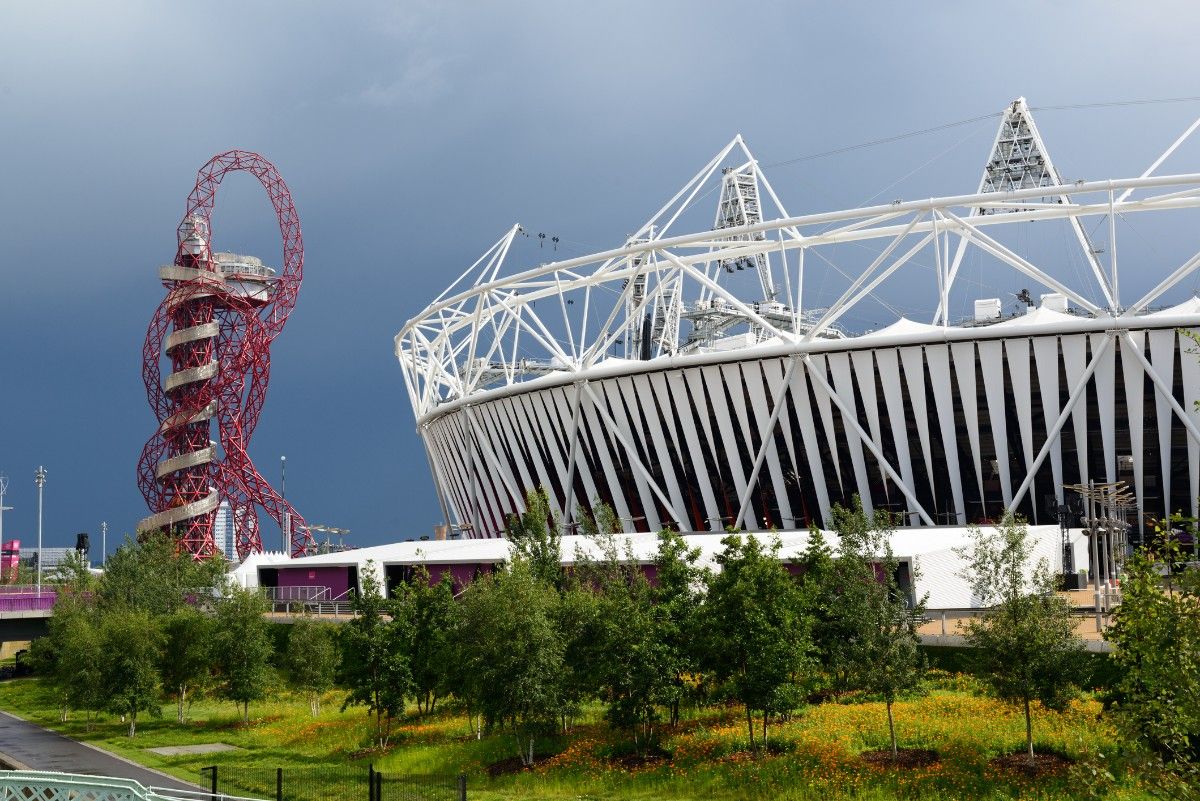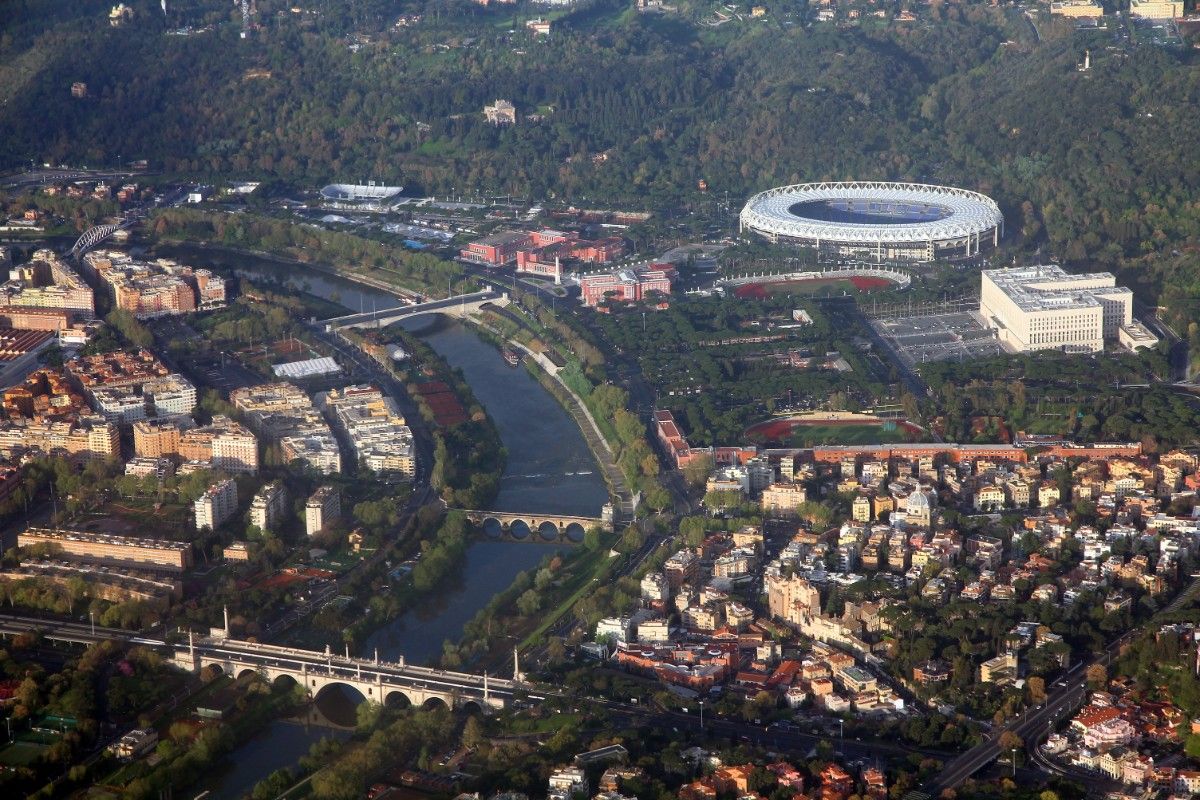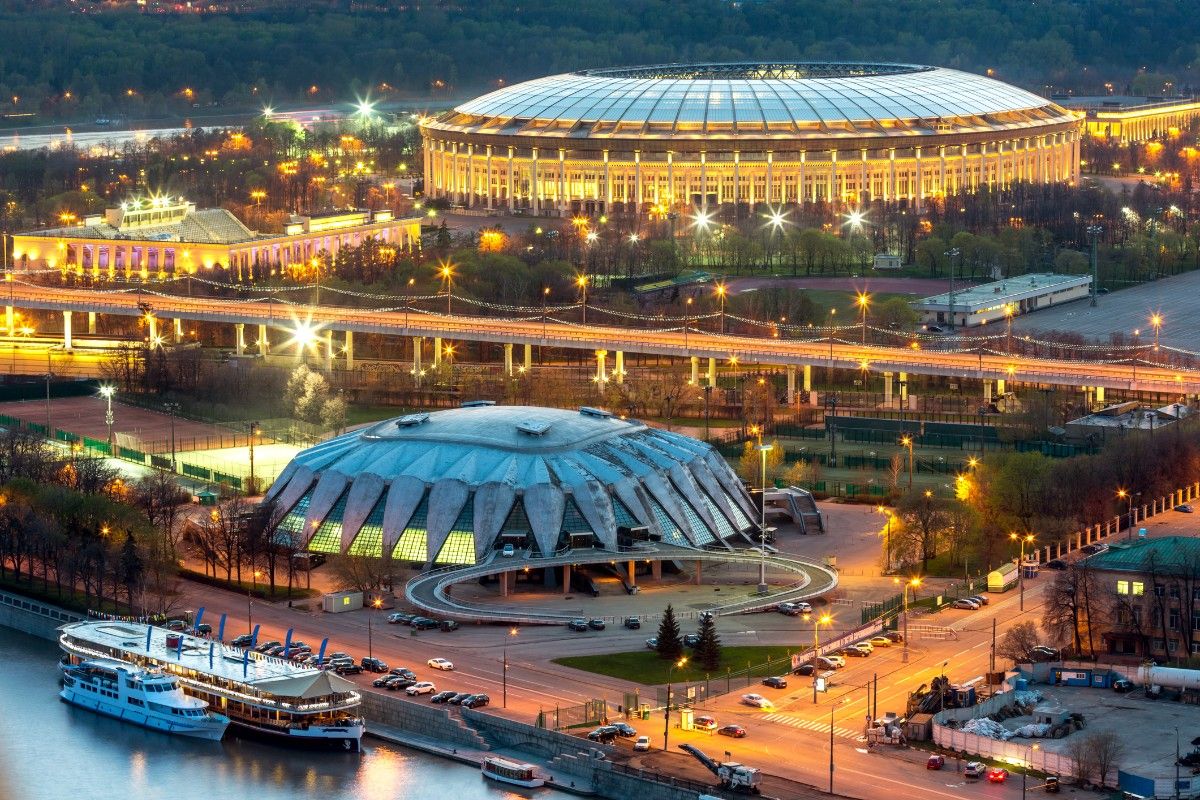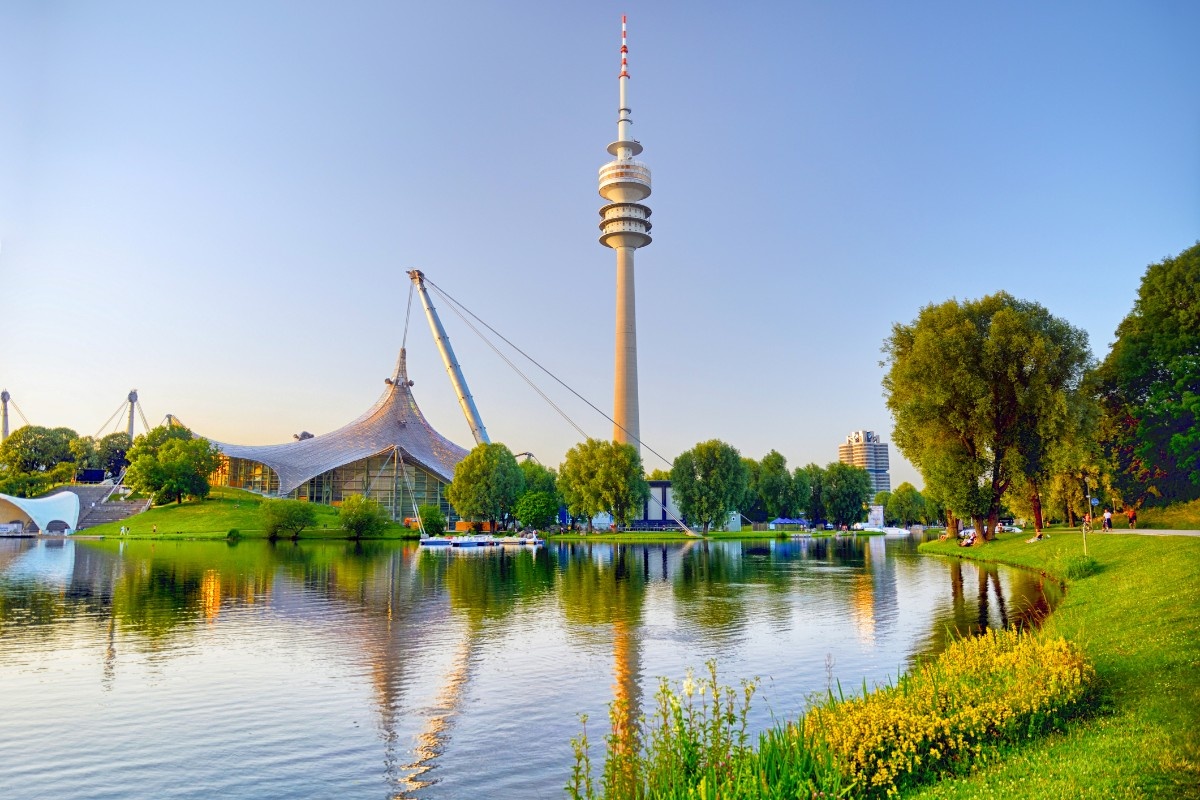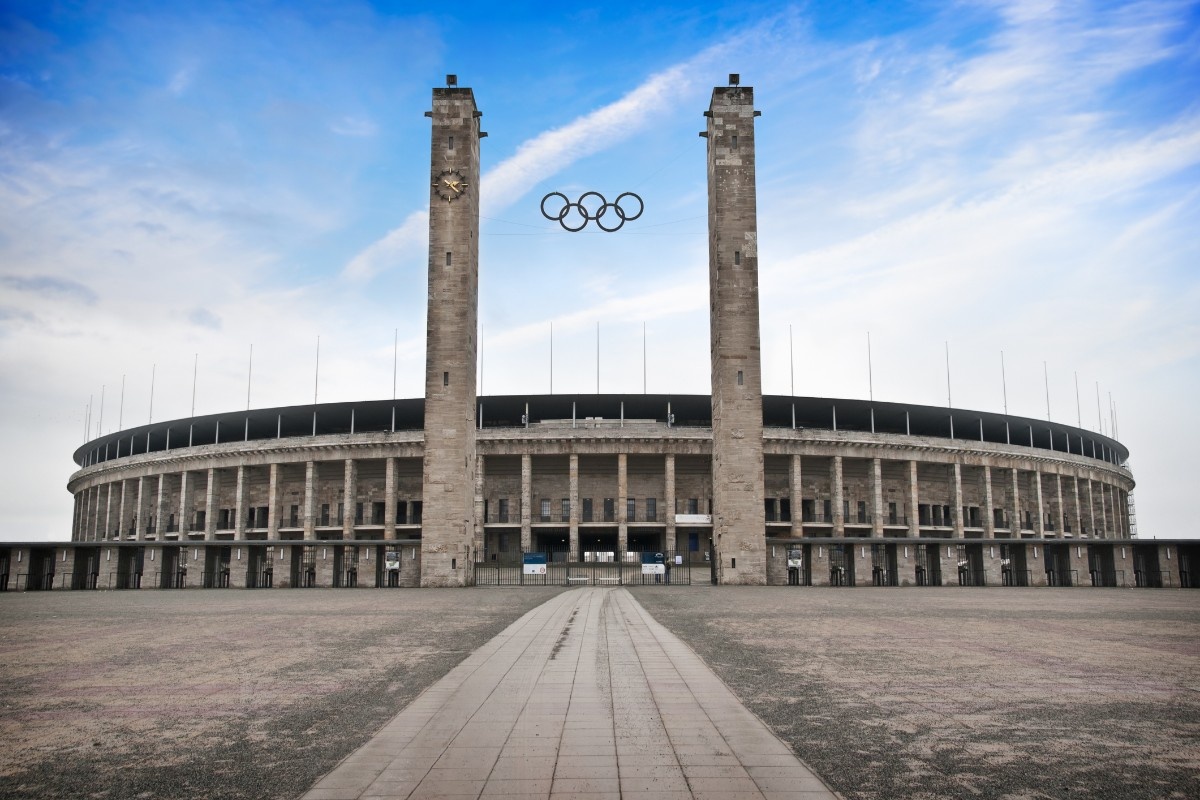The Evolution of Olympic Stadiums: From Ancient Greece to Modern Marvels
Ancient Beginnings: The Birthplace of Olympic Stadiums
The story of Olympic stadiums begins in ancient Greece, where the first Olympic Games were held in 776 BCE. The original stadium in Olympia was a far cry from the architectural marvels we see today. It consisted of a simple rectangular field, approximately 192 metres long, surrounded by sloping earth banks where spectators could sit. This basic design set the standard for the stadiā unit of measurement, which would influence track design for centuries to come.
As the Games grew in popularity and importance, so did the stadiums that hosted them. By the 5th century BCE, stone seats were added for important officials, and the track was expanded to accommodate more events. The stadium at Delphi, built in the 5th century BCE, showcased advancements in design with its horseshoe shape and stone seating for up to 7,000 spectators.
During the Hellenistic and Roman periods, stadium design became more sophisticated. The Stadium of Domitian in Rome, built in 80 CE, could hold up to 30,000 spectators and featured a complex system of underground passages and rooms. This marked a significant leap forward in the scale and complexity of stadium architecture.
The ancient Olympic Games continued until 393 CE when they were banned by Roman Emperor Theodosius I. For centuries afterwards, the concept of the Olympic stadium lay dormant, waiting to be revived in the modern era.
The Revival: Birth of Modern Olympic Stadiums
The rebirth of the Olympic Games in 1896 marked a new chapter in stadium design. The Panathenaic Stadium in Athens, originally built in 330 BCE, was renovated for the first modern Olympics. This marble stadium, with its distinctive horseshoe shape, set a new standard for Olympic venues and created a symbolic link between the ancient and modern Games.
As the modern Olympics grew, so did the need for purpose-built stadiums. The 1908 London Olympics introduced the first stadium specifically constructed for the modern Games: the White City Stadium. This multi-purpose venue could accommodate 68,000 spectators and featured a running track, cycling track, and swimming pool. It set a precedent for future Olympic stadiums to be versatile and capable of hosting multiple events.
The interwar period saw further innovations in stadium design. The use of reinforced concrete allowed for larger and more durable structures. The 1936 Berlin Olympic Stadium, designed by Werner March, was a prime example of this trend. Its imposing stone facade and capacity for 100,000 spectators made it a symbol of architectural prowess, albeit one tainted by its association with Nazi propaganda.
Post-War Innovations: Pushing Boundaries in Stadium Design
The post-World War II era ushered in a period of rapid advancement in stadium design and technology. The 1964 Tokyo Olympics showcased Japan's architectural prowess with venues like the Yoyogi National Gymnasium, designed by Kenzo Tange. Its suspended roof structure was groundbreaking at the time and continues to inspire architects today.
The 1972 Munich Olympics introduced another iconic design: the Olympic Park, created by Günter Behnisch and Frei Otto. The stadium's tent-like roof structure, made of acrylic glass panels on a steel cable net, was a revolutionary design that combined aesthetics with functionality.
As television broadcasts became increasingly important, stadium design evolved to accommodate cameras and enhance the viewing experience for audiences worldwide. The 1984 Los Angeles Olympics, held in the modernised Los Angeles Memorial Coliseum, marked a new era in the commercialisation and media coverage of the Games.
Modern Marvels: Stadiums for the 21st Century
The turn of the millennium saw Olympic stadiums become increasingly complex and multifunctional. The Sydney Olympic Stadium (now Stadium Australia), built for the 2000 Games, incorporated a retractable roof and moveable seating, allowing for greater flexibility in hosting various events.
Sustainability became a crucial factor in modern Olympic stadium design. The London 2012 Olympic Stadium (now the London Stadium) was designed with a focus on legacy and adaptability. Its upper tier could be dismantled after the Games, reducing its capacity from 80,000 to 60,000 for its long-term use as a multi-purpose venue.
Perhaps one of the most innovative approaches to Olympic stadium design came with the 2021 Tokyo Olympics (postponed from 2020 due to the COVID-19 pandemic). The New National Stadium, designed by Kengo Kuma, blends traditional Japanese architecture with cutting-edge technology. Its use of timber in the roof structure not only pays homage to Japanese craftsmanship but also aligns with sustainability goals.
As we look to the future, Olympic stadiums are likely to continue pushing the boundaries of architecture, engineering, and sustainability. The challenge for designers and host cities will be to create venues that not only serve the immediate needs of the Olympic Games but also provide lasting value to their communities long after the closing ceremony.
Iconic Track and Field Venues: Where Records Are Made and Broken
The Heart of the Olympics: Legendary Tracks
Track and field events have been at the core of the Olympic Games since their inception, and the venues that host these competitions have played a crucial role in the sport's development. These stadiums have witnessed countless record-breaking performances and have become iconic in their own right.
One of the most famous track and field venues in Olympic history is the Los Angeles Memorial Coliseum. Built in 1923, it has hosted the Olympics twice, in 1932 and 1984. The Coliseum's distinctive peristyle arch and Olympic cauldron have made it an enduring symbol of the Games. During the 1984 Olympics, it was the site of Carl Lewis's four gold medals in a single Games, equalling Jesse Owens's 1936 feat.
The Olympic Stadium in Helsinki, Finland, which hosted the 1952 Games, is another legendary venue. Known for its distinctive tower, the stadium saw Emil Zátopek's incredible triple victory in the 5,000 metres, 10,000 metres, and marathon – a feat that has never been repeated. The stadium's intimate atmosphere and excellent sightlines have made it a favourite among athletes and spectators alike.
More recently, the Bird's Nest Stadium in Beijing, which hosted the 2008 Olympics, stands out as an architectural marvel. Designed by Herzog & de Meuron in collaboration with artist Ai Weiwei, the stadium's intricate steel structure resembles a bird's nest, hence its nickname. It was here that Usain Bolt first burst onto the Olympic scene, setting world records in both the 100m and 200m sprints.
The Science of Speed: Track Design and Technology
The evolution of track and field venues has been driven not just by architectural considerations, but also by advancements in track design and technology. Modern Olympic tracks are typically made of synthetic materials that provide consistent performance and durability. The most common surface is a polyurethane-based system, often referred to by the brand name "Mondo." These tracks are designed to offer the perfect balance of shock absorption and energy return, allowing athletes to perform at their best.
The layout of the track is also crucial. The standard 400-metre track consists of two parallel straights and two curved sections. The radius of the curves can significantly affect athletes' performances, particularly in sprint events. Tracks with larger radii allow sprinters to maintain higher speeds around the bends, potentially leading to faster times.
Wind conditions can significantly impact performances in track and field, particularly in sprint events and jumps. Some stadiums have been designed with this in mind. For example, the Olympic Stadium in Berlin was built with its long axis oriented north-south to minimise the effects of crosswinds on sprinters.
As technology advances, so too does the integration of electronics in track and field venues. Modern stadiums feature high-precision timing systems, electronic distance measurement for field events, and wind gauges to ensure accurate recording of performances. Large video screens allow spectators to follow the action closely, even from a distance.
Beyond the Track: Field Event Facilities
While the running track often takes centre stage, field events are an equally important part of track and field competitions. The positioning of events like the long jump, high jump, and pole vault needs to be carefully considered to ensure optimal conditions for athletes and good visibility for spectators.
The throwing events – discus, javelin, shot put, and hammer throw – require ample space and safety considerations. Modern stadiums often feature separate areas for these events, sometimes with their own seating arrangements to provide spectators with a close-up view of the action.
One often overlooked aspect of track and field venues is the warm-up areas. These spaces are crucial for athletes to prepare for their events without disrupting ongoing competitions. Many modern Olympic stadiums incorporate dedicated warm-up tracks and field event areas adjacent to the main stadium.
The Future of Track and Field Venues
As we look forward to future Olympic Games, it's clear that track and field venues will continue to evolve. There's an increasing focus on creating stadiums that can generate their own energy through solar panels or other renewable sources. Concepts like modular design, which allows for easier repurposing of facilities after the Games, are gaining traction.
The integration of data analytics and biometric monitoring is likely to become more prevalent in training facilities associated with these venues. This could help athletes optimise their performance and recover more effectively between events.
Climate change is another factor that will influence the design of future track and field venues. With many cities experiencing more extreme weather events, stadiums will need to be designed to withstand these conditions. This might include features like retractable roofs or advanced cooling systems for hot climates.
As the Olympic Games continue to evolve, so too will the track and field venues that host them. These facilities will need to balance the demands of elite sport, spectator experience, sustainability, and long-term usefulness to their host cities. The challenge for designers and architects will be to create spaces that can meet all these needs while still inspiring awe and excitement in those who visit them.
Aquatic Centres: From Basic Pools to State-of-the-Art Swimming Complexes
The Evolution of Olympic Swimming Venues
The journey of Olympic aquatic centres from basic pools to state-of-the-art swimming complexes is a testament to the evolution of both sport and architecture. The first Olympic swimming events were held in open water. The 1896 Athens Olympics featured swimming competitions in the Bay of Zea, while the 1900 Paris Games used the River Seine. It wasn't until the 1908 London Olympics that a purpose-built swimming pool was used for the Games. The White City Stadium included a 100-metre pool within the main stadium – a novel concept at the time.
As the popularity of swimming events grew, so did the need for dedicated aquatic facilities. The 1924 Paris Olympics saw the construction of the Piscine des Tourelles, one of the first modern indoor Olympic pools. This 50-metre pool set the standard for future Olympic swimming venues. The post-war period saw significant advancements in pool design and technology. The 1956 Melbourne Olympics introduced the first Olympic-size pool (50 metres) to be used in the Southern Hemisphere. The pool at the Melbourne Cricket Ground was revolutionary for its time, featuring underwater viewing windows that allowed coaches to observe swimmers' techniques.
One of the most iconic Olympic aquatic centres is the Olympia Schwimmhalle in Munich, built for the 1972 Games. Its distinctive tent-like roof structure, designed by Günter Behnisch and Frei Otto, remains an architectural landmark. The facility housed a 50-metre competition pool, a diving pool, and a warm-up pool, setting a new standard for Olympic aquatic centres.
The 1990s and 2000s saw a trend towards creating spectacular aquatic centres that could serve as architectural showpieces for host cities. The Sydney Olympic Park Aquatic Centre, built for the 2000 Games, is a prime example. Its wave-like roof design not only created an aesthetically pleasing structure but also provided natural lighting and ventilation for the pools below.
Perhaps one of the most striking Olympic aquatic centres in recent years is the Water Cube (officially the Beijing National Aquatic Centre) from the 2008 Beijing Olympics. Its unique exterior, designed to resemble water bubbles, was made from a lightweight ETFE plastic. The interior housed a 50-metre competition pool, a 25-metre warm-up pool, and a diving pool. The Water Cube saw an unprecedented 25 world records broken during the Games, partly due to its advanced pool design.
Technical Innovations in Pool Design
Modern Olympic aquatic centres are marvels of engineering and design. The pools themselves are carefully constructed to provide optimal conditions for swimmers. The depth of Olympic pools is typically at least 2 metres, with some pools featuring adjustable floors that can alter the depth. This allows the same pool to be used for different events or converted for public use after the Games.
Water temperature is crucial in competitive swimming. Olympic pools are maintained at a temperature between 25-28°C, striking a balance between comfort for swimmers and minimising resistance. The water circulation system is designed to ensure even temperature distribution throughout the pool.
Lane ropes in Olympic pools are not just for separating swimmers. Modern designs feature discs that help to dissipate waves created by swimmers, reducing their impact on neighbouring lanes. This 'wave-eating' technology has contributed to faster swim times in recent Olympics.
The starting blocks in modern Olympic pools are also highly engineered. They feature adjustable footrests and are angled to allow swimmers to generate maximum power at the start of a race. Some recent designs even incorporate pressure sensors to detect false starts.
Diving facilities in Olympic aquatic centres have also seen significant advancements. Modern diving pools are typically 5 metres deep and are often separated from the main competition pool. The latest diving boards are adjustable and feature non-slip surfaces for safety. Bubble machines are often used to break the surface tension of the water, making it easier for divers to see the water's surface and reducing the impact of their entry.
Underwater cameras have become an integral part of Olympic aquatic centres. These provide invaluable footage for judges, coaches, and broadcasters, offering unique perspectives on swimmers' and divers' performances.
Spectator Experience and Sustainability
Spectator experience has been a key consideration in recent aquatic centre designs. The London 2012 Aquatics Centre, designed by Zaha Hadid, featured a distinctive wave-form roof and temporary wings that increased seating capacity for the Olympics. After the Games, these wings were removed, leaving a more intimate venue for long-term use.
Sustainability is becoming an increasingly important factor in aquatic centre design. The Tokyo 2020 (held in 2021) Aquatics Centre incorporated several eco-friendly features, including solar panels and a rainwater recycling system. The pool's filtration system was designed to reduce the use of chemicals, making it more environmentally friendly.
Looking to the future, it's likely that aquatic centres will continue to push the boundaries of design and technology. From energy-efficient systems to advanced materials that further reduce water resistance, these facilities will play a crucial role in the continuing evolution of aquatic sports. The challenge for future designers will be to balance the needs of elite competition with sustainability and long-term community use, creating aquatic centres that are not just venues for Olympic glory, but lasting legacies for their host cities.
Innovative Indoor Arenas: Hosting a Variety of Olympic Sports
The Rise of Multi-Purpose Olympic Arenas
Indoor arenas have become an integral part of the Olympic Games, hosting a wide range of sports from gymnastics and basketball to volleyball and boxing. These versatile structures have evolved significantly over the years, adapting to the changing needs of athletes, spectators, and broadcasters.
One of the earliest notable Olympic indoor arenas was the Deutschlandhalle in Berlin, used for boxing, weightlifting, and wrestling during the 1936 Games. Built in just eight months, it was one of the largest indoor sports arenas of its time, with a seating capacity of 8,764. While impressive for its era, it pales in comparison to the multi-functional arenas we see today.
The 1964 Tokyo Olympics marked a significant leap forward in arena design with the Yoyogi National Gymnasium. Designed by Kenzo Tange, this arena is famous for its suspended roof structure, which was groundbreaking at the time. The main arena hosted the swimming and diving events, while the smaller annex was used for basketball. Its innovative design has influenced sports architecture worldwide and continues to be used for various events today.
Moving into the late 20th century, the trend towards multi-purpose arenas became more pronounced. The Georgia Dome, used for gymnastics and basketball during the 1996 Atlanta Olympics, was a prime example. With a seating capacity of over 70,000, it was the largest cable-supported dome in the world at the time. Its flexible interior space could be reconfigured for different sports, a feature that has become standard in modern Olympic arenas.
The advent of the 21st century brought with it new innovations in arena design. The Basketball Arena used in the 2012 London Olympics was notable for its sustainability and adaptability. This temporary structure, wrapped in a distinctive white exterior, was designed to be fully recyclable and reusable. After the Games, it was dismantled and parts of it were repurposed for other sporting venues.
Technical Innovations in Arena Design
Modern Olympic indoor arenas are marvels of engineering and design. They must cater to the needs of multiple sports, each with its own specific requirements. For instance, gymnastics requires high ceilings and clear sightlines, while sports like volleyball need specific floor markings and net systems. The challenge for designers is to create spaces that can quickly and efficiently transform to accommodate these varied needs.
Lighting plays a crucial role in modern arena design. High-quality, adjustable LED lighting systems are now standard, allowing for optimal conditions for both athletes and television broadcasts. These systems can be programmed to provide different lighting scenarios for various sports and events, enhancing the spectator experience.
Acoustics are another important consideration in arena design. Good acoustics can contribute significantly to the atmosphere of an event, but poor sound quality can detract from the spectator experience. Modern arenas use advanced acoustic treatments and sound systems to ensure clear, balanced sound throughout the venue.
Climate control is a critical aspect of indoor arena design, particularly for Olympics held in locations with extreme temperatures. Advanced HVAC systems are employed to maintain optimal conditions for athletes and spectators alike. Some arenas even use zoned climate control, allowing different areas of the venue to be maintained at different temperatures as needed.
Spectator Experience and Accessibility
Spectator comfort and experience have become increasingly important in arena design. Modern Olympic venues feature comfortable seating, clear sightlines, and ample concession areas. Many also incorporate large video screens and state-of-the-art sound systems to enhance the viewing experience.
Accessibility is another key consideration in modern arena design. Olympic venues must cater to spectators with a range of mobility needs. This includes wheelchair-accessible seating areas, lifts, and wide corridors. The aim is to ensure that all spectators can enjoy the events comfortably and safely.
Behind the scenes, modern Olympic arenas incorporate a range of facilities to support athletes, officials, and media. These typically include warm-up areas, changing rooms, medical facilities, and broadcast areas. The layout of these support areas is carefully planned to ensure efficient movement of people and equipment during events.
Future Trends in Olympic Arena Design
As we look to the future, Olympic indoor arenas are likely to become even more advanced and adaptable. Concepts like modular design, which allows for easier reconfiguration of spaces, are gaining traction. There's also increasing interest in incorporating smart technologies into arena design, from app-based wayfinding for spectators to AI-powered systems for managing energy use and crowd flow.
The COVID-19 pandemic has also influenced arena design, with increased attention being paid to air quality and circulation. Future Olympic venues may incorporate advanced air filtration systems and designs that allow for greater social distancing when necessary.
Virtual and augmented reality technologies are also likely to play a larger role in future Olympic arenas. These could be used to enhance the spectator experience, providing additional information about athletes and events, or even allowing virtual attendance for those unable to be physically present.
As the Olympic Games continue to evolve, so too will the indoor arenas that host them. These venues will need to balance the demands of elite sport, spectator experience, sustainability, and long-term usefulness to their host cities. The challenge for designers and architects will be to create spaces that can meet all these needs while still inspiring awe and excitement in those who visit them.
Olympic Villages: Creating Homes Away from Home for Athletes
The Evolution of Olympic Villages
The concept of the Olympic Village has come a long way since its inception, evolving from basic accommodations to complex, self-contained communities. The idea of centralised athlete housing first emerged during the 1924 Paris Olympics. Prior to this, athletes were responsible for finding their own lodgings, often scattered throughout the host city. The Paris Games introduced a collection of wooden cabins near the stadium to house male athletes, marking the beginning of a new era in Olympic accommodation.
The 1932 Los Angeles Olympics saw the first fully-fledged Olympic Village. Located in Baldwin Hills, it consisted of 550 two-bedroom portable bungalows for male athletes. Women, however, were housed separately in a downtown hotel. This village introduced several features that would become standard in future Games, including a post office, hospital, and various entertainment facilities.
The concept continued to evolve over subsequent Olympics. The 1936 Berlin Games expanded the village concept, creating a complex of 140 one and two-storey buildings that could house 3,500 male athletes. It included training facilities, a swimming pool, and even a sauna – luxuries for the time.
Post-World War II, Olympic Villages became increasingly elaborate. The 1960 Rome Olympics marked a significant shift, with the village designed as permanent housing that could be repurposed after the Games. This approach became a model for many future Olympics, addressing concerns about the long-term value of Olympic infrastructure.
The 1964 Tokyo Olympics introduced the first high-rise Olympic Village, a departure from the low-rise models of previous Games. This vertical approach allowed for more efficient use of space in the densely populated city, a consideration that has influenced many subsequent Olympic Villages.
In recent decades, Olympic Villages have become showcases for innovative design and sustainability. The Sydney 2000 Olympic Village, later known as Newington, was notable for its use of solar power and water recycling systems. It was designed to be a model for sustainable urban development, a trend that has continued in subsequent Games.
Design and Functionality of Modern Olympic Villages
The design of Olympic Villages must balance numerous considerations. At the most basic level, they need to provide comfortable accommodation for thousands of athletes and officials from diverse cultures and backgrounds. This typically includes a mix of apartment-style residences with shared living spaces and individual bedrooms.
Beyond accommodation, modern Olympic Villages are essentially self-contained towns. They include dining facilities capable of serving tens of thousands of meals per day, catering to a wide range of dietary requirements and cultural preferences. Medical facilities are also crucial, providing everything from routine care to emergency services.
Training facilities are another key component of Olympic Villages. While athletes compete at various venues around the host city, having access to training facilities within the village is important for many sports. This might include gyms, swimming pools, and running tracks.
Transportation is a critical consideration in Olympic Village design. The village needs to be well-connected to competition venues, with efficient and secure systems for moving large numbers of athletes and officials. Many recent Olympics have employed dedicated bus lanes or other transportation systems to ensure athletes can move quickly and reliably between the village and their events.
Security is paramount in Olympic Village design. The village is essentially a secure zone, with strict access controls to ensure the safety and privacy of athletes. This includes physical security measures as well as sophisticated surveillance and access control systems.
One often overlooked aspect of Olympic Villages is the need for social and recreational spaces. Athletes spend a significant amount of time in the village when not competing or training, and providing spaces for relaxation and socialisation is important. This might include everything from games rooms and lounges to religious facilities catering to various faiths.
Sustainability and Legacy Considerations
Sustainability has become a major focus in recent Olympic Village designs. This goes beyond just using eco-friendly materials and energy-efficient systems. The concept of legacy – how the village will be used after the Games – is now a key part of the design process.
The London 2012 Olympic Village took this concept further. Designed to be converted into a mixed-use neighbourhood after the Games, it incorporated numerous sustainability features, including rainwater harvesting and energy-efficient design. The village was also notable for its focus on creating a legacy of affordable housing for London.
The Tokyo 2020 Olympic Village (used in 2021 due to the COVID-19 pandemic) showcased several innovative features, including the use of hydrogen fuel cells for power and autonomous electric vehicles for transportation within the village. After the Games, the village is set to be converted into a vibrant residential neighbourhood, demonstrating the long-term value of these investments.
Looking to the future, Olympic Villages are likely to continue evolving. There's increasing emphasis on creating villages that can be easily repurposed after the Games, either as housing or mixed-use developments. This approach helps to justify the significant investment required to build these facilities and ensures they continue to benefit the host city long after the Olympics have ended.
The COVID-19 pandemic has also influenced thinking about Olympic Village design. Future villages may incorporate features to enhance health security, such as improved ventilation systems and designs that allow for greater social distancing if necessary.
Technology and Cultural Considerations
Technology has become increasingly important in Olympic Village design. Recent villages have incorporated high-speed internet access, allowing athletes to stay connected with family and supporters back home. Some have even included custom apps to help athletes navigate the village and access important information.
The increasing globalisation of the Olympics has also influenced village design. Modern villages often include culturally sensitive features, such as multi-faith prayer rooms and diverse dining options, to cater to the needs of athletes from around the world.
As the Olympic Games continue to grow and evolve, so too will the villages that house the athletes. These temporary communities will need to balance the needs of elite athletes with sustainability concerns and the long-term interests of host cities. The challenge for designers and planners will be to create spaces that can meet all these needs while still capturing the unique spirit of the Olympic Games.
The Olympic Village represents more than just a place to sleep and eat; it's a crucial part of the Olympic experience for athletes. It's where friendships are formed, cultures intermingle, and the true spirit of the Games comes alive. As we look to future Olympics, the evolution of these villages will undoubtedly continue, reflecting our changing world and the enduring values of the Olympic movement.
Related Articles

Most marathon runners do not need to prepare for extreme climates, gruelling ascents and natural predators, but for some 26.2 miles simply isn’t enough of a challenge. With the ASICS Manchester Marathon and London Marathon fast approaching, we take a look at 5 of the world’s toughest and craziest off-road marathons and ultra-run

